So I seem to have met my match. Over the course of the last couple of weeks, I’ve been rewatching the television series MAD MEN, which is a truly great piece of work end to end. I hadn’t seen the show since I watched it first run, and viewing the episodes on a daily rather than weekly basis made me appreciate the flow of the storytelling so much more—I was better equipped to remember lines of dialogue or throwaway moments from episodes earlier in the context of the current episode.
So of course I went in search of a really good book on the series. And I found more than I bargained for. Because Taschen, the high-end book publisher, had released an enormous book set on the series. It includes not only a two-volume slipcased set of books on the making of the show, featuring cast and creator interviews, behind-the-scenes material and so forth, but also a full bound set of the script for every episode in the seven-season run of the show. Here, you can find it at this link. Normally, this would be an automatic buy for me. But there’s a problem.
The cost of this monster set is $1000.00.
Now I’m not really known in my circles for my impulse control. And that’s because, in general, my needs and wants are small on a practical level. So when I find something that I want, I tend to just go ahead and buy it. But that price tag is a stumbling block for me, a barrier that I can’t quite seem to get myself to hurdle. It’s not even like that grand is all that daunting—I could fold it into my regular monthly cash-flow without causing too much of a disturbance, I’ve been saving money for many years. But just that number is enough to make me pause, hesitate, refrain.
I think that’s a natural enough thing. I can remember when I was a kid and starting to get into buying back issue comic books. For years, my threshold was $5.00—I would not pay that amount for any single comic book. And I didn’t, until I did. I can even tell you the book that did it. It was UNCANNY X-MEN #115, an issue that I had missed when it was new. X-MEN back issues commanded a heftier price than any other title in those days, so when my local shop got in a copy, it was at that threshold price. And after some agonizing, I caved in and bought it. Realize, this was in 1980, when $5.00 was a lot more money in my world than it is today. But having done it once made it that much easier to do it again, and then again, and then again.
So I don’t know. Clearly it’s a value-for-money proposition, but it’s also something more than that. It’s just a gut-level feeling as to how much something is worth. That MAD MEN set is a stunning bunch of material, but I have a difficult time rationalizing that any book(s) could be worth that much money to me. (Confession: the most money I ever paid for a single comic book was $1400.00, far more than this purchase price. But that was a very special instance, and it pretty much resulted in the impulse to buy back issue comics snapping in my brain. I’ve bought very little in the way of back issues in all of the time since, that drive is simply gone.)
So I think my point is; I feel you when you say that comic books are too expensive for you. Even if my threshold is a bit higher than yours might be.
But enough about me, how are you all doing? It’s a new year, which means that I’m going to roll out and road test some new categories below. Are you ready? Before we get to any of that, though, we still need to go through the week’s assorted questions.
Nacho Teso
what's your favorite Marvel Christmas story?
I think it was that one where Stan Lee sold his toupee to buy Jack Kirby a lighter, but Kirby had pawned off his cigars to get Lee a new comb. Oh, the irony!
Zach Rabiroff
I'm going to ask your forgiveness ahead of my question this week. It's malicious of me to do it, I know, but you were going to get this query sooner or later, and no matter what answer you gave it was going to be the *wrong* one, so it's better that we peel off the band-aid and get it over with now: In 2024, you're going to be the editor of X-Men. Mr. Brevoort, what does the mutant metaphor mean to you?
Well, Zach, I suspect that the mutant metaphor means a lot less to me than it does to many of the assorted folks who follow the series and its characters so avidly. It would be hard to be more entitled mainstream than I am, a middle-aged white man of some means. But the great thing about the X-MEN is that the metaphor at the center of it is relatable to anybody who has felt like an outcast or a misfit at some point in their lives—and haven’t we all been there at one point or another? That said,. it’s clearly of greater import to more marginalized groups, whether that be because of their ethnicity or their sexuality or their gender or what-have-you. Back when I was a reader, I didn’t really get this, not having had enough life experience to have (knowingly ) come into contact with people like the above. But I have now. And so, while when I first heard about it, I thought that Chris Claremont’s idea that Mystique had actually been Nightcrawler’s father was weird and off-putting and a ridiculous idea, today I understand how such a story is a meaningful expression of visibility for people for whom the world often isn’t very kind or accepting, and so I’m glad that Jordan and his team of creators have finally gotten to canonize that origin in the recent X-MEN BLUE one-shot. So X-MEN will always include life-and-death struggles between good and evil and fantastic visuals and larger-than-life characters. It’s a super hero adventure series, after all. But the engine that drives all of it is a story about outsiders banding together to carve out a place for themselves in the world, and to show people that they’re not as bad or as strange or as alien as they might appear to be on the surface, and are as worthy of peaceful co-existence with society as any other strata of the population.
I look forward to a bunch of people, many of whom won’t have read the above in context, going bananas on my social media feeds over the next week or two.
Jeff Ryan
You mentioned Cerebus, where you stuck with the book despite have misgivings about artist Dave Sim. Was there an artist for whom you couldn't separate their beliefs from their output, and had to walk away?
Not in the world of comics, Jeff, but certainly elsewhere. I was a big fan of Bill Cosby, and in particular his terrific 1960s series I SPY. He’s one of the greatest practitioners of stand-up that has ever worked in the form, his albums are truly excellent and he did a lot to help pave the way for other black performers. But I cannot watch the man in anything any more. And that’s a small tragedy, in that I SPY was a really important series to me at a certain point in my life. And I can’t help but feel that Alexander Scott, the character played by Cosby in that series, would have kicked Cosby’s ass.
JV
which hero do you think works well as a married person?
Growing up I liked the Spidey/MJ marriage (I also like Spidey single so either way works with me) - but I was thinking of how a bunch of DC heroes were married or at least long term couples. Superman and Lois work for me as a couple (again maybe because based on when I grew up they were married on TV and in comics). I guess some old school heroes work in an old school marriage. Superman, Flash, the Hawks, Vision and Scarlet Witch, etc.
Or do you think it detracts from younger readers connecting with them?
I think this tends to vary depending on the character, JV, and my list is likely going to differ from yours based on when and how we first encountered the characters in question. But certainly Reed and Sue Richards don’t seem to have been harmed by being married. The silver age Hawkman and Hawkgirl/Hawkwoman were introduced as man and wife. And it never bothered me that Barry Allen, the Flash, was a married man (though I don’t feel the same thing about Wally West necessarily.) But your example of Superman and Lois, for example, doesn’t sit right with me, as that union eliminates one of what I think of as the central tenets that makes Superman function as a character; the romantic triangle between Clark and Lois and Superman. And sure, maybe that’s a dated paradigm—certainly MY ADVENTURES OF SUPERMAN wasted no time in throwing that approach out, and it works really well. To me, though, revealing that truth and uniting those characters strips a lot of the drama and the complication out of that series, and loses something that I find essential. In part this is because I started reading the character in the 1970s, when his feelings of isolation and loneliness and remove from the world—the fact that he was the Last Son of Krypton was a weight that the character carried and expressed on a regular basis—was an essential part of who he was and what made him interesting.
Adam Chapman
What was the process like in the late '90s and early '90s when Marvel would collaborate on #1/2 issues and #0 issues with Wizard Magazine? How were titles selected that would be part of this collaboration. I can't recall now, but was there any particular differentiation between a #1/2 or #0 being used? It's interesting looking back, as a book like Slingers #0 had a different art team than the regular title, although still written by Joseph Harris. But in the case of Captain Marvel #0, you had the entire creative team of the regular book doing this story, same as with Thunderbolts #0 (both of these titles you were editing).
Any perspective into the goings on behind the scenes is as always greatly appreciated!
As I remember things, Adam, the difference between a #0 and a #1/2 was pretty direct: the #0s were polybagged in with the issue of WIZARD, you got those for free. Whereas the #1/2s had to be sent away for, and cost a premium price. So I preferred the #0s—I don’t think I ever did a #1/2 personally, although Marvel certainly did. And it was all promotional, ultimately, an opportunity to get your series seen by the audience for WIZARD, who might carry over from there to the actual book. It’s the same as when we ran whole issues in the pages of WIZARD such as AVENGERS #57, Geoff Johns’ first as writer. And the process tended to be collaborative. WIZARD would request certain things if they knew a particular launch or event was coming up, and Marvel would suggest books based on upcoming plans. And they’d be put together just like any other title. I think that SLINGERS #0 that you speak of was created very much at the last minute, which may be why a different artist was involved in it. For myself, as much as possible I wanted to use the team who worked on the series, as with THUNDERBOLTS #0 and CAPTAIN MARVEL #0 (which was the kickoff to the series, turning up in WIZARD before the end of AVENGERS FOREVER and the start of that CAPTAIN MARVEL series.) For AVENGERS #0, George Perez wasn’t going to have the time to add it into his schedule, so even though it was the lead-in to our big Ultron Unlimited storyline, I got Stuart Immonen to draw that one, with Kurt Busiek still writing.
Steve Replogle
At some point, I came across information about Jason Young's Fantastic Four Number Nine Project, which was very similar - except that it was not approved by Marvel. And not ever sold anywhere, but given away at comic conventions. Otherwise, though, it was the same idea - a different artist recreating each page but keeping to the previously-published script. I have never read the entire comic, just parts that have been posted on the internet.
I also read about Ron Regé, Jr.'s Diana comic, where he retold Wonder Woman's origin story in his own unique style. And then I actually came across that issue, and read it, and enjoyed it. I think there is an unapproved and notorious Batman story floating around somewhere, too.
What do you think of these unauthorized works? I know that this is a grey area, ethically and legally - but artistically? I must say that the Fantastic Four Number Nine Project looks good to me, at least in what I have seen so far. It would perhaps not be out of place next to Marvel's own tribute issues, or next to the two humorous Strange Tales volumes. In fact, I think Dash Shaw's Dr. Strange story in Strange Tales Volume 1 was initially another grey-area artifact, produced just for his own enjoyment.
I’ve never heard of Jason Young’s FANTASTIC FOUR NUMBER NINE PROJECT before, Steve, but I know the sort of thing that you’re talking about. And obviously, I can’t endorse any violation of trademarks and that sort of thing. But as a fannish activity that’s done on a non-profit basis, it seems like as good an expression of admiration for a particular work as anything else that might be done. And on at least one occasion, I transformed a story that had been done in this manner into an actual approved and published Marvel comic. This was James Kochalka’s Hulk Versus The Rain four-page story, which he’d done for the unauthorized “bankruptcy benefit” issue of COOBER SKEBER. As it often the case with oddball projects like this one, this was suggested to me by Kurt Busiek, who had seen the story and thought that it was great. I agreed and reached out to James, hiring him to redraw the story in color for the 2001 INCREDIBLE HULK ANNUAL. Here’s a tiny sample:
Behind the Curtain
.This one’s a bit of a before-and-after comparison.
What you see above are Jack Kirby’s pencils for the cover of the 1977 Marvel Calendar. Jack was called upon to draw a number of characters in this that were unfamiliar to him, such as Conan and Doctor Strange and Howard the Duck, and even some of his old mainstays such as the Hulk had evolved some since he had last regularly drawn them back in the 1960s.
To help bring it on model, the piece was inked by Marvel’s art director John Romita, who was asked to make whatever adjustments he thought were necessary. As you can see, Romita wasn’t shy about making changes, even on characters that had been originated by Kirby such as Captain America or the Thing. And the Spider-Man figure has been almost completely redrawn from scratch, albeit in the same general pose. This was one of Romita’s functions in that job, keeping the characters on model, especially in anything that was licensed to the mainstream.
And here’s the final colored piece. It looks good, but a little bit weird in places, where the Kirby and Romita aesthetics fight one another. There had been a time when Kirby was the absolute look of Marvel, but by the time of his return in the late 1970s, that crown had been passed on to Romita.
Pimp My Wednesday
A relatively small week for our office. Things are likely going to continue in this vein until we start to roll out the new X-Books, as our existing projects are handed over to other editors to take over as part of that shift.
Despite the credits on this particular cover mock-up, this ninth issue of AVENGERS is guest-illustrated by Francesco Mortarino. But it’s till a part of Jed MacKay’s ongoing “Twilight Dreaming” storyline that puts the Avengers against both Myrrdin’s Twilight Court in order to save Kang but also Nightmare, lord of the dream world. Plus another beautiful Stuart Immonen cover!
And we’re up to AVENGERS UNITED #14, in which Earth’s Mightiest Heroes have split up to deal with the situation on Ghesh. In this installment, Captain Marvel and the Vision steal a spacecraft.
A Comic Book On Sale 75 Years Ago Today, January 7, 1949
I’m not going to do a full write-up on this issue of WHIZ COMICS as I want to leave space for other newer things. But I thought it was still worth showing off just for its cool photo-background cover.
A Comic I Worked On That Came Out On This Date
The last issue of my run of GHOST RIDER, #93, came out on January 7, 1998. The thing was, it wasn’t supposed to be the final issue, #94 was. But Marvel was in bankruptcy protection at this point, and editor in chief Bob Harras was under a lot of pressure to keep the division profitable. Bob, though, was also a bit conflict-averse, so he waited until I was on vacation before instructing my assistant Glenn Greenberg to stop all work on issue #94 and that it wasn’t going to be printed. Glenn called me directly and I hit the roof, but there wasn’t much of anything that could be done, I wouldn’t even be back in the office for another week. So this was a bit of an ignominious end for a title that had been a huge seller only a couple of years earlier, and which I felt like we were in the process of getting back on track. Original artists Javier Saltares and Mark Texiera had come back onto the series, and writer Ivan Velez Jr. was steering the book back into the realm of supernatural horror. But with the failing marketplace, it was too little, too late. I did manage to get the last laugh, such as it was. I held on to all of the material that had been generated for GHOST RIDER #94 for years, and when Marvel moved offices, we found a bunch of similar material (three or four of which came from me) and built a little FROM THE MARVEL VAULT release out of it, where those stories were completed and issued. So that final issue did see print after all, albeit a decade later than it should have.
Chasing the Dragon
I was a big fan of the work of the late Darwyn Cooke. Most everything that he worked on was terrific, especially DC: THE NEW FRONTIER. But I think his finest work was his quartet of adaptations of Donald Westlake’s Parker novels, in particular this first one, THE HUNTER. These were issued in black a white, or really white and a single color printing, which put all of the emphasis on Cooke’s linework and drawing acumen. The material allowed him to play with the sort of noir material that he excelled at. And these projects were largely a one-man show, with nobody getting between him and the board except for the original novels. And even there, in an act that almost borders on hubris, Darwyn went and changed the ending of THE HUNTER, eliminating the entire final chapter from the original book. It was an incredibly ballsy choice, and one that I’m hard-pressed to believe that Westlake okayed. But it worked. The four completed volumes; THE HUNTER, THE OUTFIT, THE SCORE and SLAYGROUND each work as a stand-alone story, but each one simultaneously builds of the events of the earlier ones. They’re immaculately executed, with a design sense that runs throughout the package from front to back. These are incredibly adept pieces of cartooning from end to end. The volumes were later issued in a pair of oversized “Martini Editions” that present the work at a bigger size and that include wonderful behind-the-scenes material on their making. These are really a cut above. As with pretty much everything that I’m going to run in this CHASING THE DRAGON section, these are highly recommended.
The Deathlok Chronicles
DEATHLOK was the first ongoing series I ever edited, and I ran the book right into the ground in my inexperience. Having just pulled together a retrospective on the entire run that I presented to our junior editors in our weekly Marvel Reading Circle meeting, it occurred to me that a similar recounting might make for a good feature here. If nothing else, it’s an opportunity to make myself look foolish and stupid a whole lot, and that’s always entertaining. The only downside is that, in order to do the story justice, I’m going to need to speak truthfully about the assortment of other people who worked on the title, and sometimes in unkind ways. So I’m going to try this, and we’ll see how it all goes.
The 1970s Deathlok had been a futuristic riff on the Six Million Dollar Man, focusing on a soldier, Luther Manning, who in the dystopian world of the far-off 1990s was brought back to life as a sort of robot zombie, his body rebuilt with high-tech prosthetics and his actions driven by a built-in computer with which his consciousness would wrestle. Accordingly, Deathlok was largely apart from the rest of the Marvel Universe, but in a last-ditch attempt to save the strip, creator Rich Buckler and scripter David Anthony Kraft brought him to the present, where he could fight Demon-Slayer and team up with the Thing. Eventually, Manning’s story was wrapped up in a trio of CAPTAIN AMERICA issue written by Marc DeMatteis and drawn by Mike Zeck, and that was the end of the character.
By the late 1980s, though, there was a bit of a push to bring back a number of the properties that had lain fallow as Marvel expanded into the Direct Market, and Deathlok was chosen to head up what would turn out to be a four-issue limited series released in the “Prestige Format”—essentially, the squarebound cardstock cover format of THE DARK KNIGHT RETURNS. Bob Budiansky held a “bake-off” to find a creative team for the project, which was an open call in which any number of creators could submit a pitch and the best one would get the assignment. The winning proposal came from two writers who also worked editorially in Bob’s area: Dwayne McDuffie, who was then Bob’s assistant editor, and Gregory Wright, who functioned as the managing editor, a position which also reported to Bob. Dwayne and Greg took some of their cues from ROBOCOP, creating a new Deathlok in the here-and-now of the Marvel Universe. The new character was Michael Collins, a pacifist computer programmer whose brain was transplanted into the cyborg death machine that he’s been unknowingly help to create. Collins was based visually on Danny Glover, then well known for his role in the LETHAL WEAPON films. The artist on the project was Butch Guice, with a pre-X-MEN Scott Williams providing the slick, mainstream inking. Greg was going to color the series as well as co-write it, using a blueline process that resulted in more fully painted color than was available in the regular color comics of the era. All of this happened well before I entered the picture, and it’s probably enough to hold us for this initial installment. Except for one other thing: Guice produced a painted cover for the first issue, seen above. But Bob wasn’t satisfied with the result, and so he wound up getting Joe Jusko to do his own version based on the same cover sketch, which was what was ultimately used. Jusko had been doing a lot of poster work for Bob as well as semi-regular covers on the black and white magazines, but he hadn’t done a whole lot of super hero work just yet.
Blind Item
I’m not even all that convinced that this is going to work, but I’m going to try it here and see how it goes. There are stories that I have that are worth telling, except that there are those who don’t come off all that well in them. And so I’ve relented from sharing them. But here, from time to time under this banner, I’m going to attempt to craft versions that get the essential points across without revealing the identity of all of the players in question. We’ll see if I can pull this off—and if I can’t, then I’ll stop. And I’ve got the perfect story to start off with, because the lack of a name is the entire point.
In the early 1990s, as the industry expanded and a bunch of new companies launched, there was a real gold rush for creative talent. There simply wasn’t enough to go around. This is why there are any number of Marvel books that were produced during these years that look like they were drawn by artists who had no business being in the majors yet—because they didn’t. But with Marvel putting out close to 150 releases a month and DC, Image, Dark Horse, Valiant, Tekno and a million others all vying for people, there was often no choice.
In the wake of the success of Image, there was also a real drive to find and bring in the next generation of young creators. So you’d get situations where Sarra Mossoff would find samples from Stephen Platt in the slush pile and hire him to take over the flagging MOON KNIGHT series. The moment his first issue came out, Bob Harras reached out to Platt and hired him to take over CABLE. And before Platt could even draw a page of it, Rob Liefeld made him an even jucier finacial offer to come draw PROPHET for Extreme Studios. So Platt went from a nobody to a hot commodity in the space of a single issue. And there was a generation of young would-be creators who all thought that it was only a matter of time before the same success struck then.
I hired one such guy to do a 10-page back-up story in a project that I was working on. The artist in question hadn’t done any story work yet at all, just a pin-up or a cover here and there. But his samples were promising. He also had a lot of swagger for a young guy. He was one of those people who wore his round sunglasses indoors and walked around in his stylish leather jacket, posing and telling anybody who would listen about how he was going to be the next hot thing in comics, and how he was deciding between opportunities. I got him in the chair for the 10-pager, gave him the script, and waited.
The artist would come into the office on a fairly regular basis, working the various editors in the hopes of finding his big break. So I’d check in with him regularly about his progress on that story, and get a wondrous array of excuses and promises of work being slaved over and love being invested in every pen stroke. Eventually, though, six weeks had gone by, the deadline to send the book in question to print was looming, and I was forced to confront the artist. He brought in portions of two partly-completed pages that looked as though he might have worked them up before coming into the office that morning, and telling me not to sweat it, that he was going to make the project a hot commodity when it was released, and that he’d get everything done. By this point, though, I was out of time, so I fired him.
When I told him he was off the gig, he was incredulous, and he let out with a profanity-filled rant, telling me that once he became a big wheel in the industry, he’d remember this slight, and that I would regret firing him when he became a huge name that everybody wanted. Well, that was more than two decades ago, and as far as I can tell, the artist in question never did release anything at all in the comic book industry, nor have my attempts to find out whatever happened to him turned up any notable work in any related field, such as animation or game design. Far as I can tell, for all of his swagger and his nice-looking samples, he never accomplished anything, and I am perhaps the only person in the industry who still remembers him.
And I will never speak his name aloud.
Monofocus
Just by way of bookkeeping, as I mentioned at the start, my rewatch of MAD MEN continues. I’m into the final season at this point, and by next week I’ll be finished and on to other things. And it’s a pretty great show, though the weak season in my estimation is Season Six, which often feels like it’s rehashing old ideas and backflipping through new riffs on the same ideas, not entirely sure how to proceed. it’s still wildly entertaining, it just loses some of its forward momentum in that year.
Posted at TomBrevoort.com
Yesterday, I wrote about the first Marvel mutants.
And five years ago, I wrote about the five best comic books of 1977.
It’s snowing crazily here, at least eight inches have fallen already, and the snow is supposed to continue all night and into tomorrow still. So hopefully we won’t all freeze to death. And if that’s the case, then I’ll see you again in a week. In the meantime, stay warm yourself, and brace for 2024. it’s going to be a whopper!
Hat’s All, Folks!
Tom B




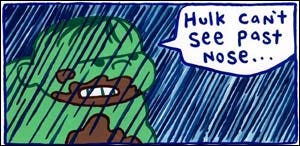
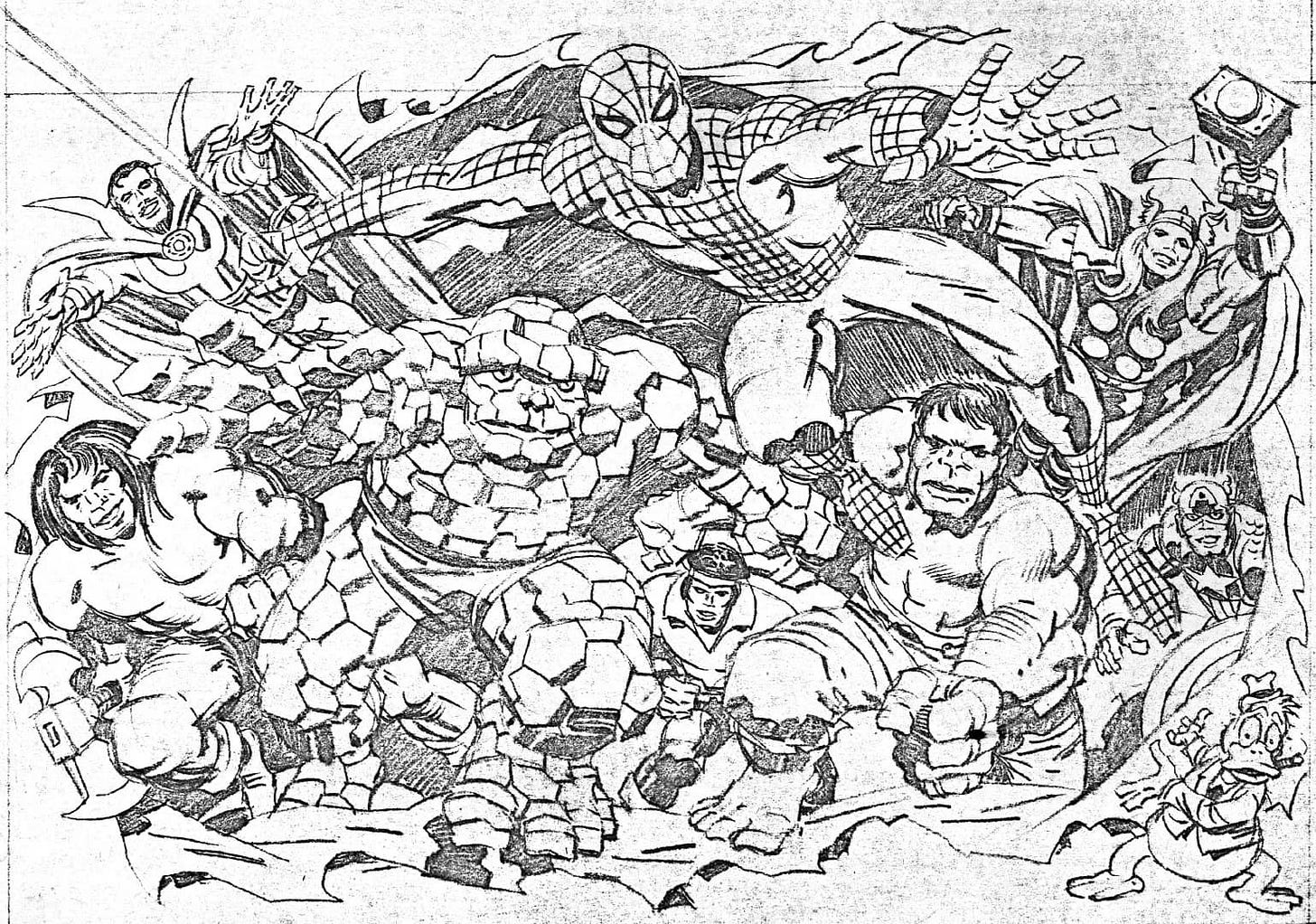






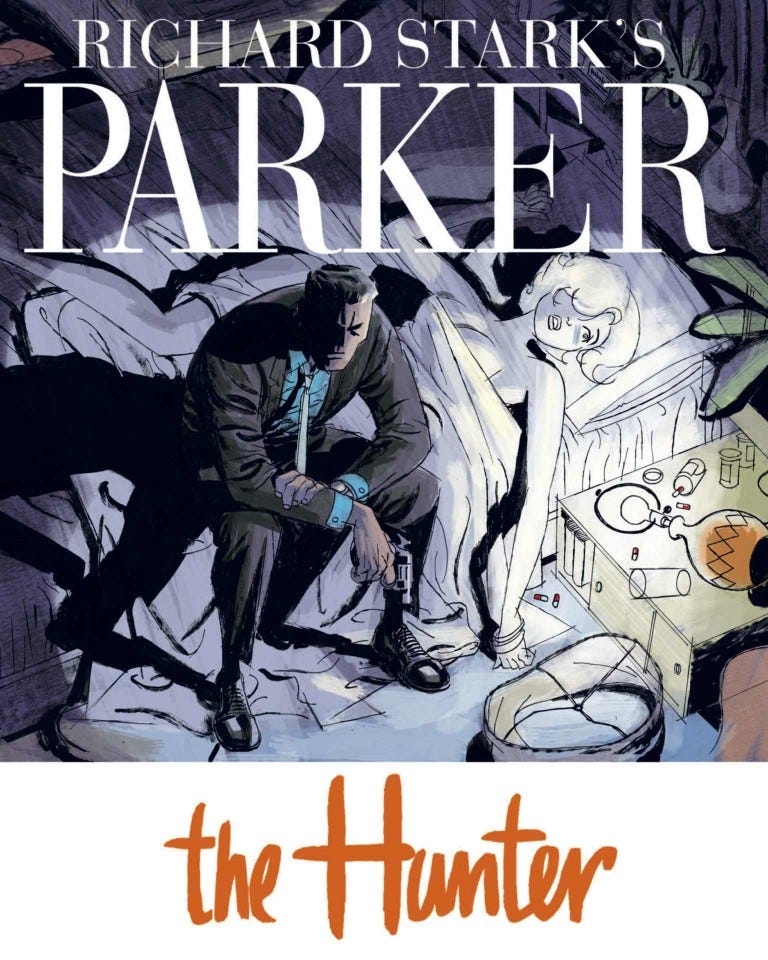

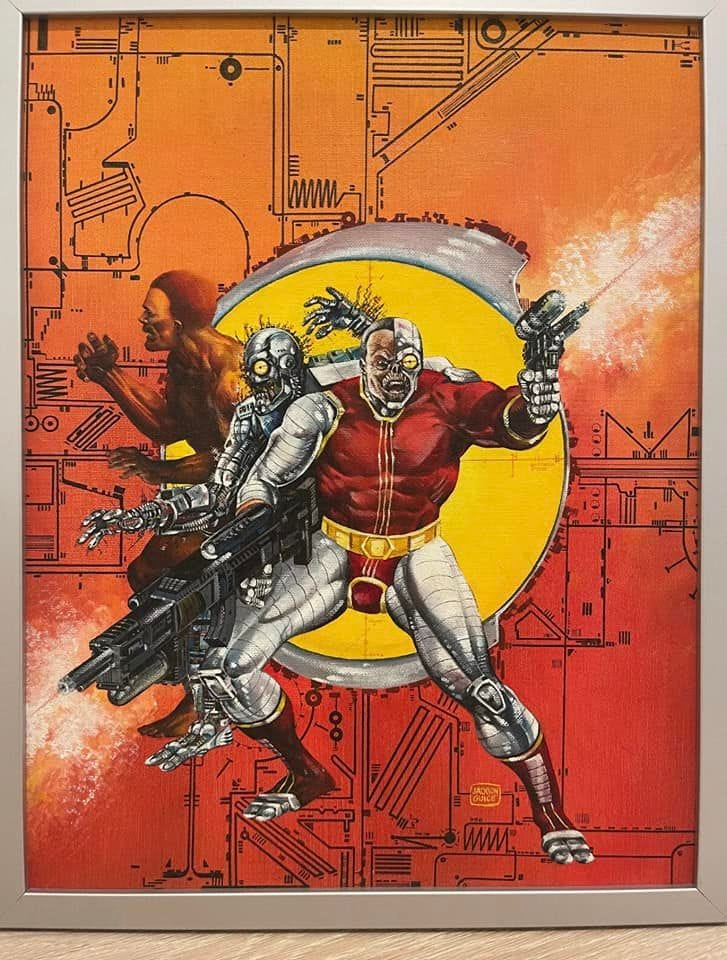
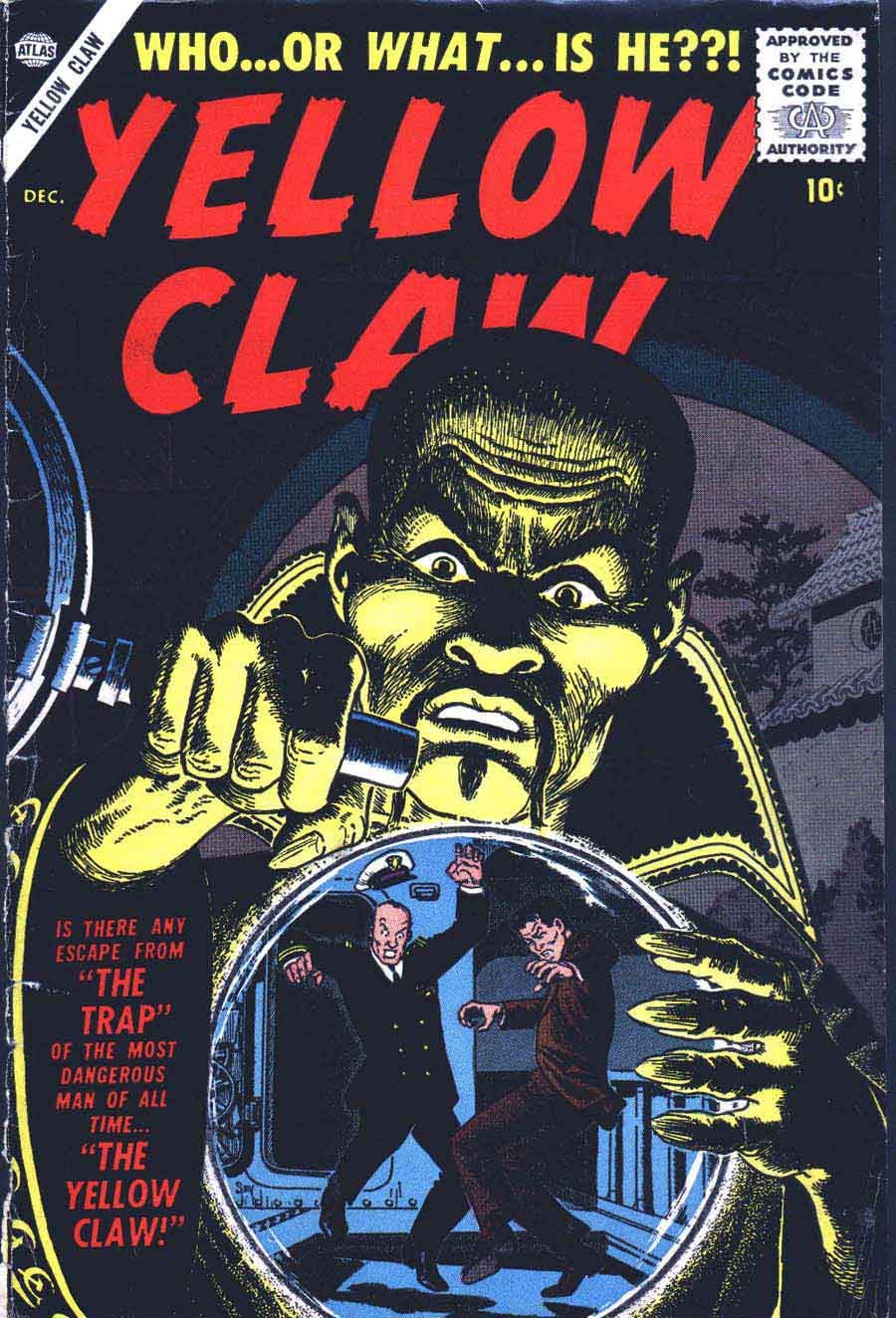
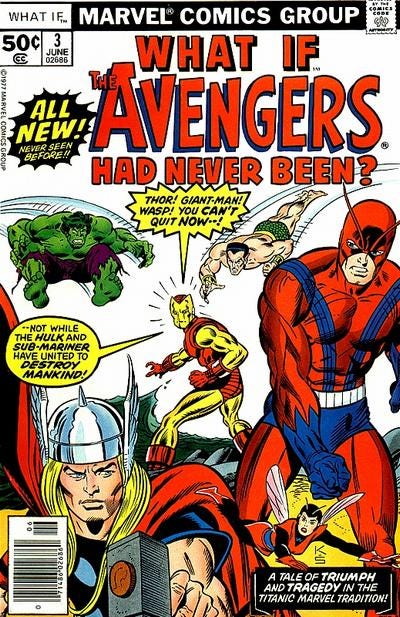
For those interested in the Deathlok pitch, Dwayne posted it on his website which you can read thanks to online archives: https://web.archive.org/web/20071201200239/http://homepage.mac.com/dmcduffie/site/Deathlokpitch.html
What comic did you pay $1,400 for?